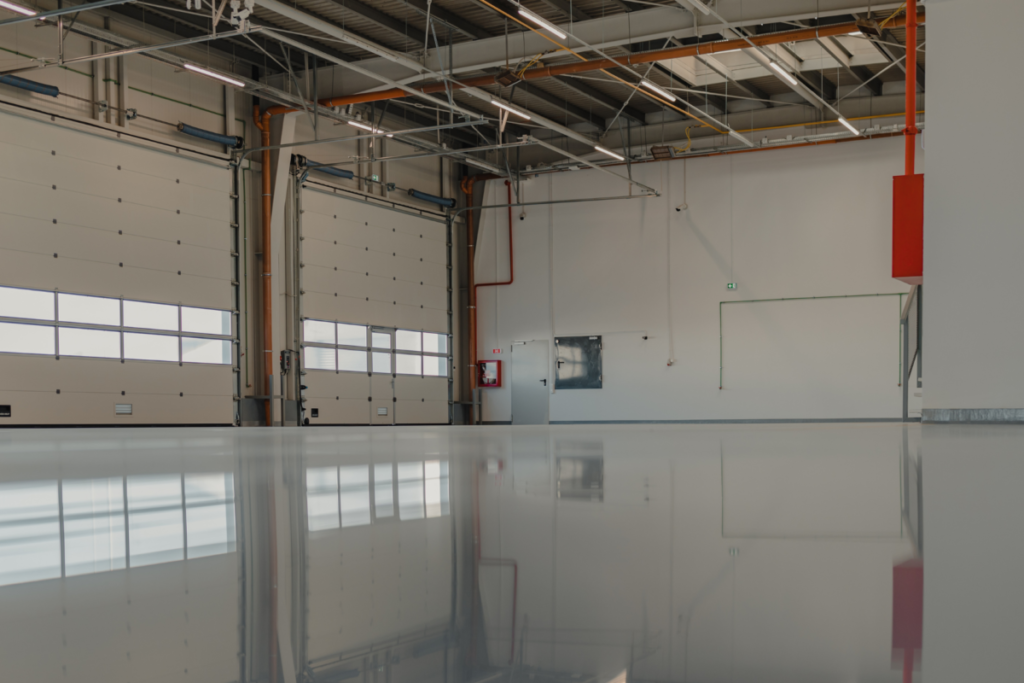
Enhance your space in Florida with tropical epoxy floor solutions
Discover how Elitecrete’s garage epoxy flooring transforms Florida homes and businesses with durability, aesthetics, &

May 15, 2024

When it comes to selecting the best material for your next project, whether it’s a new floor, a protective coating, or anything in between, understanding the science behind Epoxy and Polyurethane can make all the difference. Epoxy and polyurethane are two powerhouse materials of polymers. Each with unique molecular structures that define their capabilities. By exploring these substances, we unlock the secrets to their strengths and weaknesses, guiding you to make informed decisions that meet your specific needs.
Continue reading to discover how tiny molecules can have a huge impact on your project’s success.
Epoxy is a type of polymer known for its robust and intricate molecular structure. It consists of molecules called epoxides—these are rings made up of an oxygen atom and two carbon atoms. This special formation is highly reactive, which is key to epoxy’s effectiveness. When mixed with a curing agent, these epoxides undergo a chemical reaction, leading to a process known as curing. During curing, the epoxy molecules link together to form a tightly interconnected network. Thus, creating a solid material that is both strong and durable.
Epoxy’s molecular structure offers several remarkable benefits that make it an excellent choice for various applications:
By leveraging the unique molecular structure of epoxy, individuals and businesses can benefit from a flooring solution that is not only tough and long-lasting. It is also adaptable to a variety of decorative preferences and practical requirements.
Suggested Reading: Can High Temperature and Humidity Affect Epoxy Floors?
Polyurethane is a versatile material, particularly favored for flooring due to its unique chemical composition and adaptable properties. Created from a reaction between diisocyanates and polyols, it forms a thermoplastic polymer known for its urethane linkages. They offer several advantageous properties:
These properties make polyurethane a smart choice for flooring across diverse environments, balancing functional benefits with aesthetics to meet the demands of both practical and stylish flooring solutions.
Suggested Reading: DIY Epoxy Garage Floor: Why To Hire Professionals
When comparing epoxy and polyurethane, it’s important to understand how their molecular structures affect their practical uses, particularly in flooring. This comparison can help you decide which material is best suited for your specific needs.
Epoxy is made up of molecules that feature a unique three-membered ring structure known as an epoxide. This specific configuration allows epoxy to form highly cross-linked polymer structures when it reacts with a curing agent. The result is a material that is exceptionally strong and durable.
Epoxy’s tightly linked molecular structure provides high resistance to:
In flooring, this means epoxy is an excellent choice for areas that must withstand heavy traffic, potential chemical spills, or extreme temperatures. Applicable settings include garages, industrial environments, and commercial kitchens.
Polyurethane, on the other hand, consists of a different kind of molecular makeup. Its structure includes a sequence of urethane groups – a linkage formed from a chemical reaction between a diisocyanate and a polyol. This structure allows polyurethane to be more flexible compared to epoxy.
The flexibility of polyurethane makes it less susceptible to cracking under stress or deformation. This is beneficial for surfaces that require resilience and the ability to handle vibrations or impacts. For flooring, polyurethane is often chosen for spaces like sports facilities, residential areas, and places needing sound dampening qualities. It provides a softer surface that can absorb impacts more effectively than epoxy.
The choice between epoxy and polyurethane flooring depends on the specific requirements of the space. If you need a floor that must endure heavy loads, resist chemical corrosion, and last a long time without significant wear, epoxy is likely the better choice. Its robust structure ensures longevity and maintenance ease.
Conversely, if the priority is comfort, flexibility, and resistance to physical impacts, polyurethane is more suitable. Its ability to flex slightly under pressure helps prevent cracks and damage from heavy use, making it ideal for areas where comfort and durability are priorities.
Both epoxy and polyurethane offer distinct advantages due to their molecular structures. Epoxy excels in environments that require durability and resistance to harsh conditions. Meanwhile, polyurethane stands out in settings that benefit from flexibility and impact resistance. Understanding these properties will help you make an informed decision that aligns with your flooring needs.
When selecting a flooring material, consider the specific requirements of your space. For environments where heavy equipment is used, the robust structure of epoxy makes it an excellent choice. In areas where hygiene is paramount, such as in hospitals or food preparation areas, the seamless nature of epoxy flooring prevents the accumulation of dirt and bacteria, promoting a clean environment.
If you’re considering epoxy flooring, look no further than Apex Epoxy for professional installation. With over 20 years of experience and a commitment to quality, Apex Epoxy ensures that your new floor will exceed your expectations.
Ready to transform your space with durable, stylish, and long-lasting epoxy flooring? Contact Apex Epoxy today and take the first step towards a perfect flooring solution tailored to your needs.
The major difference between epoxy and polyurethane lies in their chemical structures and their resulting properties. Epoxy is known for its exceptional strength and chemical resistance due to a highly cross-linked structure. This makes it ideal for applications needing a tough, durable finish like coatings and adhesives. On the other hand, polyurethane is more flexible and has excellent abrasion resistance, making it better suited for surfaces that require resilience and flexibility.
Yes, epoxy is highly chemically resistant. Thanks to its tightly cross-linked molecular structure, it can withstand exposure to a wide range of chemicals without degrading. This resistance includes common solvents, acids, and even alkalis. This makes epoxy an excellent choice for environments where chemical spills are possible, such as in laboratories or industrial settings.
Choosing between polyurethane and resin depends largely on the application needs. If you need a material with superior strength, thermal stability, and chemical resistance, epoxy resin is likely the better choice. It’s particularly well-suited for demanding environments and high-stress applications. However, if flexibility, impact resistance, and abrasion resistance are more critical for your project, polyurethane is the superior option. It’s excellent for areas with high foot traffic or surfaces that experience frequent impacts.
Both materials involve chemicals that, if not handled correctly, can pose health risks during the mixing and curing stages. Epoxy resins often contain substances like bisphenol A (BPA), which can release volatile organic compounds (VOCs) during application and curing. These organic compounds can irritate the skin, eyes, and lungs if proper safety measures are not followed. Polyurethane can release isocyanates, which are harmful and can cause respiratory issues. These materials can be a concern because they are not easily degradable and can contribute to landfill waste.
Absolutely, the molecular structures of epoxy and polyurethane significantly influence their adhesion properties. Epoxy provides excellent adhesion to a wide variety of surfaces. This is because the molecular chains in epoxy form strong bonds with the surface and among themselves. It creates a durable, cohesive layer that is hard to break. Polyurethane, meanwhile, is known for its slightly more flexible molecular structure. This allows it to move and adjust to the contours of the surfaces it bonds to, resulting in good adherence. This flexibility makes polyurethane an excellent choice for surfaces that experience movement or expansion, like wood that swells and contracts with temperature changes.
Written By:
James Wilson’s extensive experience as a construction manager is apparent in his practical advice on epoxy floor installation. Having managed numerous projects after his studies at Purdue University, his contributions offer step-by-step guides and insider tips that ensure successful flooring projects for Apex’s audience.

Discover how Elitecrete’s garage epoxy flooring transforms Florida homes and businesses with durability, aesthetics, &

Discover how Elitecrete’s garage epoxy flooring transforms Florida homes and businesses with durability, aesthetics, &

Discover how Elitecrete’s garage epoxy flooring transforms Florida homes and businesses with durability, aesthetics, &

Providing epoxy flooring services for homes & businesses in and around Brunswick, GA, Jacksonville, Naples & St. Augustine, FL
Quick Links
Copyright © 2024 Apex Flooring, LLC, All Rights Reserved.